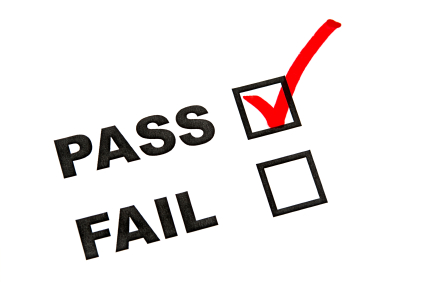
Taking the Architectural Registration Exams is something that all of us aspiring architects must go through. However, the whole process can be intimidating; from studying and scheduling your exams, to sitting in the testing center wondering if you’ll pass. I thought I’d share some of my experience with new testers in hopes of reducing some of the anxiety that comes with starting this endeavor.
Study Material. There is a lot of study material out there for these exams. The ARE, 5 Review Manual by David Kent Ballast and associated ARE 5 Practice Exam, are the most comprehensive, in my opinion. They are at least a very good place to start. I would suggest visiting NCARB’s ARE 5.0 Community online. This is a sounding board for people who are currently testing. Each exam has its discussion board, and the posts are generally beneficial. People will often share their opinions on what study material has worked for them as well as different testing approaches. As with any forum, you’ll see your fair share of negative comments too, just ignore those! When I begin studying for a new section, I start by taking a full practice exam to identify my weak areas. Some of this stuff you know from being in the industry, so focus your study time on the areas that you’re not as familiar. You are not going to remember every word you read when studying, nor do you need to. Grasping general concepts is what you need to keep in mind.
Other Study Material Suggestions:
Black Spectacles Videos – These are great for visual learners. A lot of these can be viewed on YouTube without paying for a subscription (which is pricey), so look there first!
Architect Exam Prep – This includes written information/graphics as well as an audio portion walking through page by page. You can purchase this material for individual exams or all material together. $579.95 for all or $99.95 for each.
Schiff Hardin Lectures – Schiff Hardin is a professor and an Architect that provides a great overview of the AIA contract documents, which are covered in detail on the Project Management and Practice Management exams. I used to listen to these on my commute to work. FREE!
Designer Hacks – This a great practice exam website. Access to each exam is $39 and well worth the money. You can take full timed exams and quizzes as often as you’d like.
Hyperfine – Great for PPD and PDD. It provides detailed case study examples and study assignments. This one is $39 and is well worth the money.
International Building Code – Free online! Know your sections!
Scheduling your exams. Have a plan! Think about how far apart you want to take them. Think about the order in which you want to take them. You are not required to take these exams in any specific order. However, think ahead because if you fail one, you are required to wait two months before re-scheduling. In that vein, you may want to schedule the tough ones first, just in case. When you go online to schedule your exams, you’ll be selecting a day and time from a calendar of available slots. The time options are typically 8:00 am, or 12:00/12:30 pm. You need to think about what will be best for YOU. Are you an early riser and a motivated morning person? If so, maybe 8:00 is your best bet! I benefit from a substantial review of my material directly before testing. Having said that, I always go for the 12:00/12:30 option. This gives me plenty of time to commute and not have to worry about being late. I grab a cup of coffee, zone out, and do my final review. As for the day of the week, think strategically. I always try to schedule my tests on a Saturday. It allows me to mentally remove myself from the work week and focus on the exam. Others prefer testing on Monday after a full weekend of studying. Again, whatever works for YOU!
Prometric Test Center. [this information is specific to my experience at the Prometric Test Center in Greenwood Village, Colorado] I’m not going to sugar coat it, the testing center is kind of like going to the airport. Only bring what you need into the building. Your license is required to check-in, so don’t forget that. I typically don’t even bring my phone inside because they ask you to turn it off anyway. No jewelry either! There are lockers to store your belongings, as your license is the only item you can bring with you. *TIP* You don’t have to wait until your scheduled time to check-in. You may check-in up to an hour early and begin testing. BUT don’t be late! They ask that you arrive at least 30 minutes before your scheduled time, which is necessary because the line gets very long, very quickly. You’ll check in at the desk and wait for your name to be called. Once called, you’ll go through a door into the security area. There are a few different rooms with testing computers, each holding 10-15 people. [Not everyone there is taking the A.R.E., in fact, you might be the only one taking this set of exams. So, if you see people bringing in study material with them, they’re likely testing to become a doctor or nuclear scientist, don’t worry about them.] You will be escorted to your assigned area to start the airport screening process. They will ask you to: empty your pockets (even those tiny pockets that can’t possibly hold anything), put your arms up for metal detection, take off your glasses (to make sure you’re not a spy with a microscopic camera), and lift your pant legs to make sure you’re not bringing in your own pencils or anything. You will then sit down and verify your name, do three fingerprints, and establish your start time. They hand you a single piece of scratch paper, two sharp pencils, and wish you with “good luck” (sometimes). You will be brought into your room and be asked not to say a word. They will show you to your computer station and then you’re on your own.
Taking the exam. OK, so you’ve made it through security, and you are ready to test! After sitting down at your assigned station, you’ll be asked to confirm your name (again) and that you’re taking the correct exam. Once you do that, your test will begin along with your timer. Your time counts down in the top right corner of your screen, and it’s visible throughout the entire exam. You are not allowed to write anything down on your paper until the timer starts. *TIP* The second the timer starts, do a brain dump on your scratch paper. Depending on the exam, I write down things like spec sections, ADA clearances, building types, etc. to reference throughout the exam. Every exam question has a “mark for review” option, which allows you to re-visit the question at the end (as long as you have time leftover). Don’t spend too much time thinking on any one question. If you don’t know the answer immediately, mark it for review and move on. The exam is set up as multiple-choice questions with two case studies at the end. The case studies include 10-15 questions each, depending on the division. You will be provided with several references for each study, ranging from IBC excerpts to ADA requirements to AIA contract documents, etc.
*TIP* As you go through the exam, markdown questions that may be informed by one of these references. You won’t know what references will be provided until the end, but they may be helpful as you review your marked questions.
*TIP* When you are going through references in your case study, use the search/find command to sift through those documents. Some of them are very long, and you can waste a lot of time looking for your answer.
*TIP* It’s a good idea to review the case study questions before diving into the reference material. Sometimes you can answer the questions without research into the reference material.
When your time runs out you’ll be asked a series of questions regarding your level of preparation for the test – these don’t count toward anything. Finally, you get asked if you would like to see your provisional score. YES, you find out right there and then whether you passed or failed (if you click yes). You’ll get an email a few days later either way, but don’t you want to know immediately?!?
OK, you are done. You are exhausted. Your brain is fried. Go have a drink; you deserve it!




